This is a complex WHS site with multiple listed locations. The dispersed spatial organization characteristic of human occupation on the island since the 9th century is difficult to grasp. Moreover, it made motorized travel and orientation difficult.
Before going there, I had no idea how the land ownership (called Menzel) is organized, nor how the different communities live together on the island, which gave the visit a kind of uncomfortable feeling of secrecy that I believe the other writer members of the WHST community shared.
But, let's stay positive and seize the beauty of the moment to visit some of the island's archetypal monuments, which are as follows:
- Coastal mosques: the Sidi Yeti Mosque and the Sidi Jmour Mosque.
2. Inland mosques: the Moghzel Mosque and the Bou Messouer Mosque.
3. An underground mosque: Louta de Sedwikech.
4. The Ghriba Synagogue.
I visited also the Guellala Museum.
And then I took a photo of a water well, formerly an essential element of life on the island, when I could do it, and of an agricultural landscape characteristic of the island. It was all crowned with a stroke of luck with a traditional fishing scene, the zribas, which is a fixed method of fishing carried out using submerged fences made of palm leaves (the introductory photo). Another element of the intangible site "Knowledge, know-how, traditions and practices associated with the date palm" to note in my notebook!
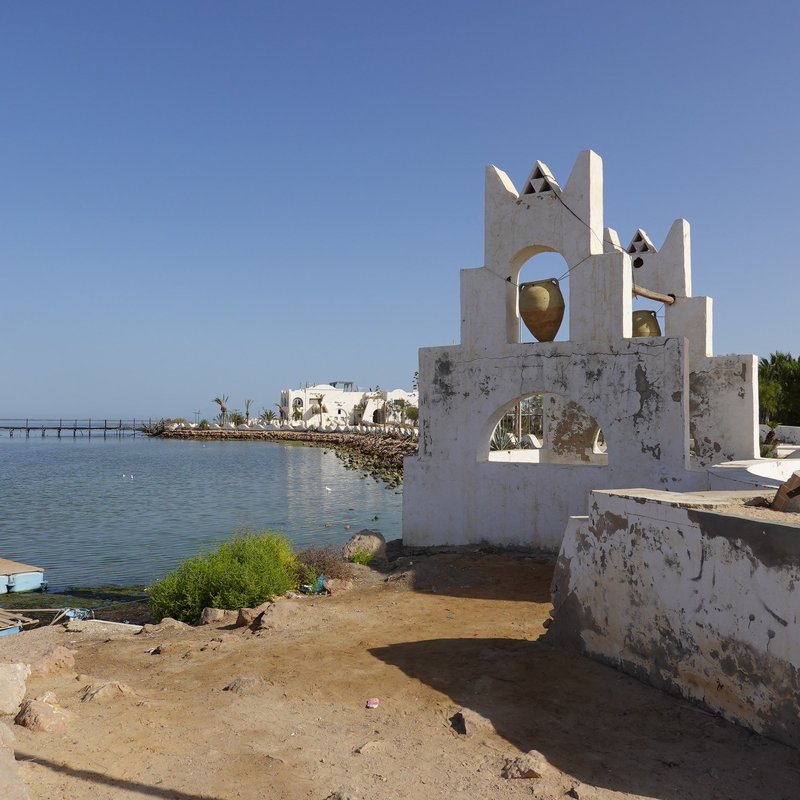
From the first visit to the Sidi Yeti mosque, I was informed about the authenticity of the place since I (almost) disturbed some women gathered and sitting in the darkness of the prayer room. I don't know what they were doing there, but it gave a special flavor to the visit since nothing presupposed their presence apart from raised voices.
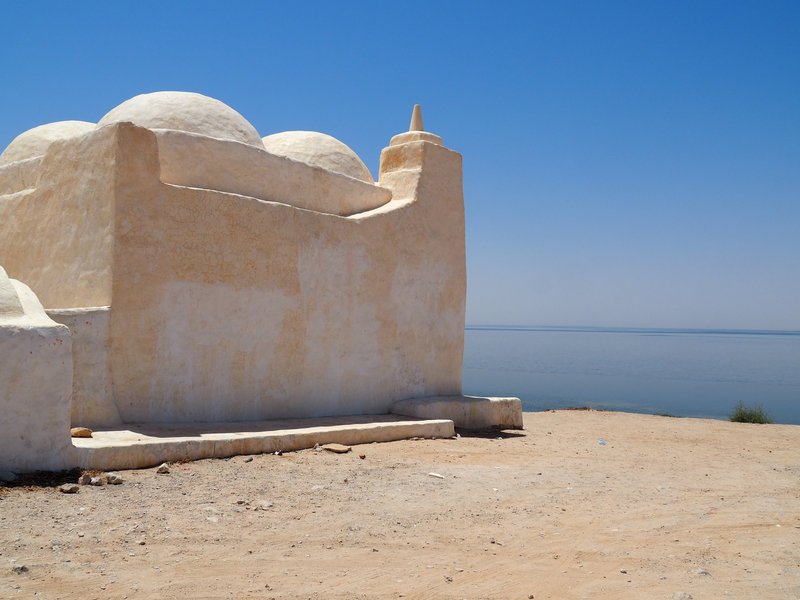
So, in addition to their religious function, coastal mosques have a role in monitoring the sea, providing warning and defense. This is undoubtedly reflected in their architectural style.
Buried mosques, like that of Louta of Sedwikech, would have served as a refuge... from the burning sun during backbreaking work in the surrounding orchards, it seems to me.
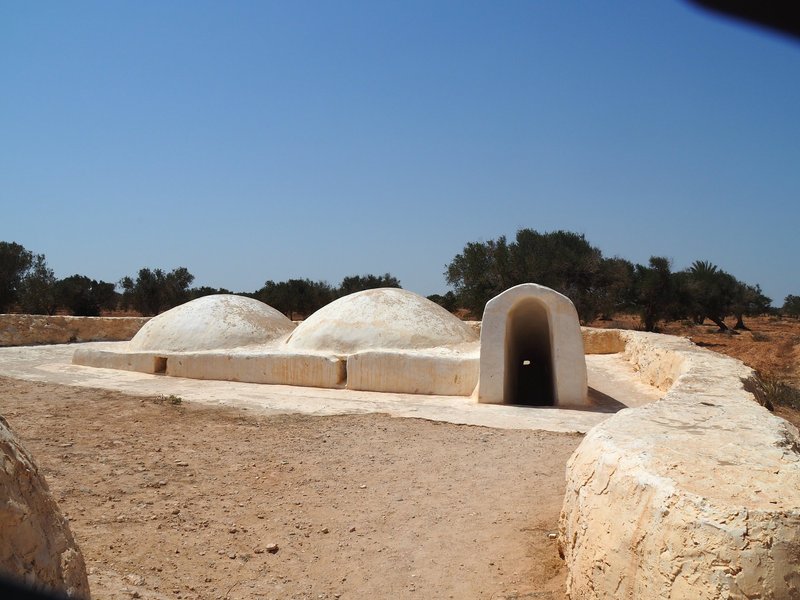
And the mosques inland would have served as a second line of defense, yes, why not when you see their squat shape devoid of windows. I also see a connection with the building materials available on the island: limestone, sand, earth, clay and wood to shape the vaults. In this they remind me of the Sahelian mosques, with their lime coating. An interesting detail: the esplanades surrounding them serve as gigantic rainwater collections to supply a water cistern. Ingenious. See also the open rooms under arcades which probably served as madrasas. According to the tourist guide Les Guides Bleus, there are two Muslim communities that share the territory: the orthodox Malikis in the north and west of the island and the Wahhabis in the east and south, which would have an influence on the decoration of the mosques, more rigorous among the Malikis but personally I did not distinguish any difference.
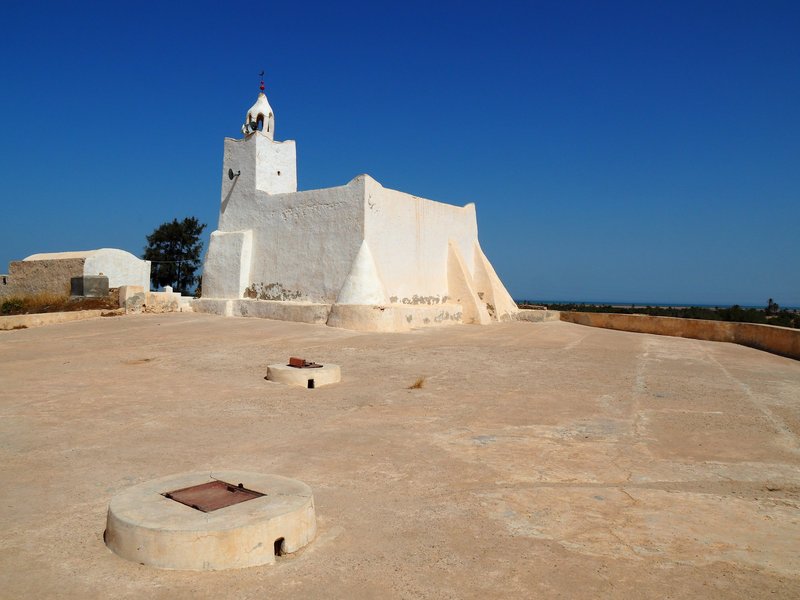

The synagogue of Ghriba that we see today does not follow the same construction schemes, it is more recent because it was built around 1920. It is said to have been founded in the 6th century BC! Entering it, observing the ritual of the faithful and the richness of the interior decoration is really worth it. A donation of a few dinars is welcome and unlike churches, you must keep your head covering.
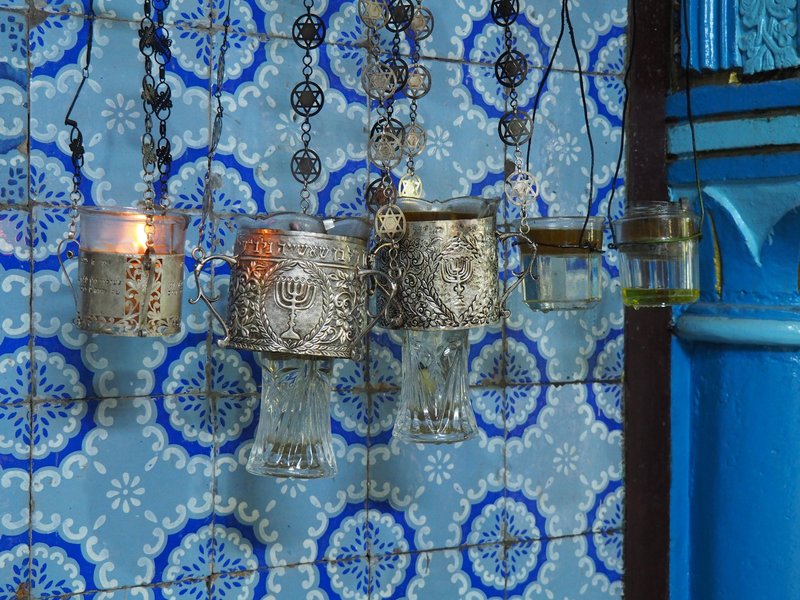
I slept next to the Sidi Jmour mosque on the west coast, facing the sea, the place seemed idyllic, but in the middle of the night the muezzin started calling to prayer and the faithful went inside to do something obscure. A practitioner prayed outside on the steps of the mosque, in the dark I could only see his head behind the railing. I immediately imagined all sorts of things of course, like being caught and cut into slices of pork sausage!
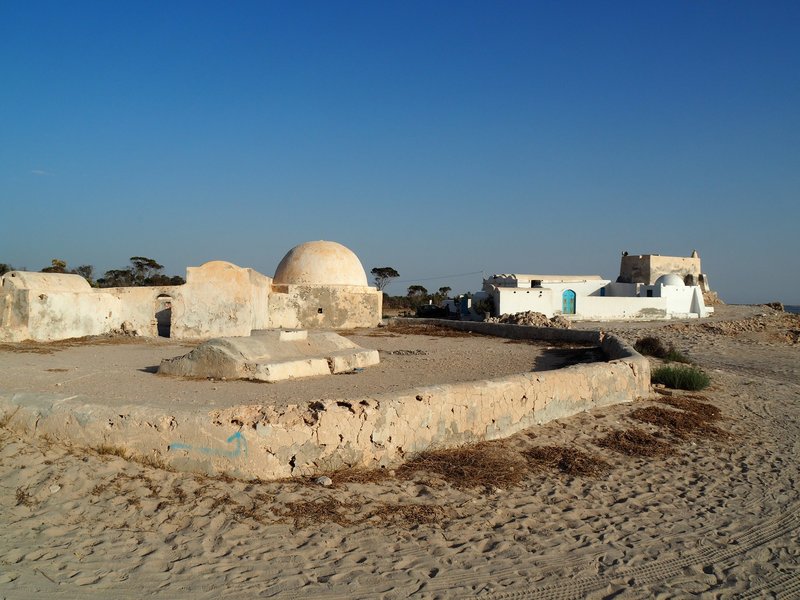
Don't miss the Guellala Museum, what is on display is directly linked to the (harsh) reality of the island's former inhabitants and there is an exemplary collection of wedding outfits from all regions of the country.
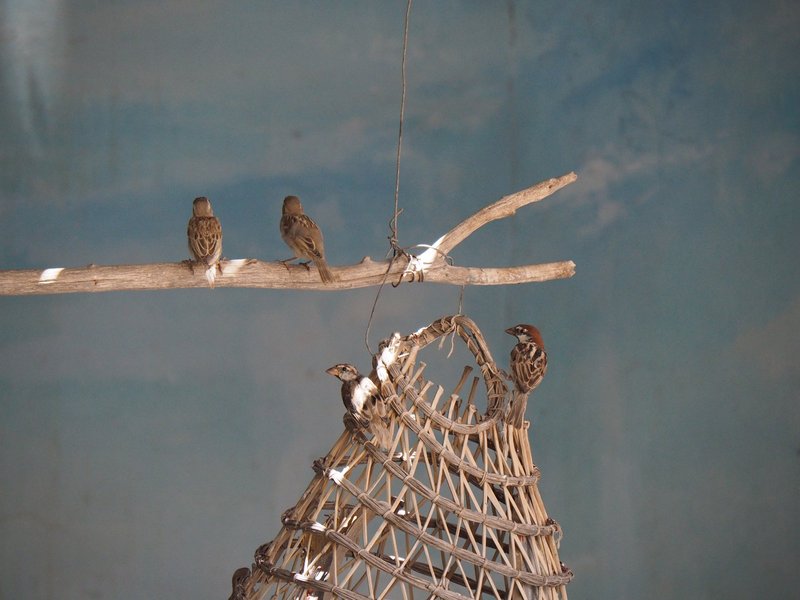
Compared to the previous not very cheerful reviews, is the perception of a site different when traveling in a mobile home, I don't know, but I hope that these few lines and my opinion will modestly move the cursor upwards because personally I felt that the island surrounded by the sea is indeed a world apart. I obviously carefully avoided Houmt Souk and the complexes of sardine boxes drying in the sun on the sand, if you see what I mean? It can help...
More on
Comments
No comments yet.
